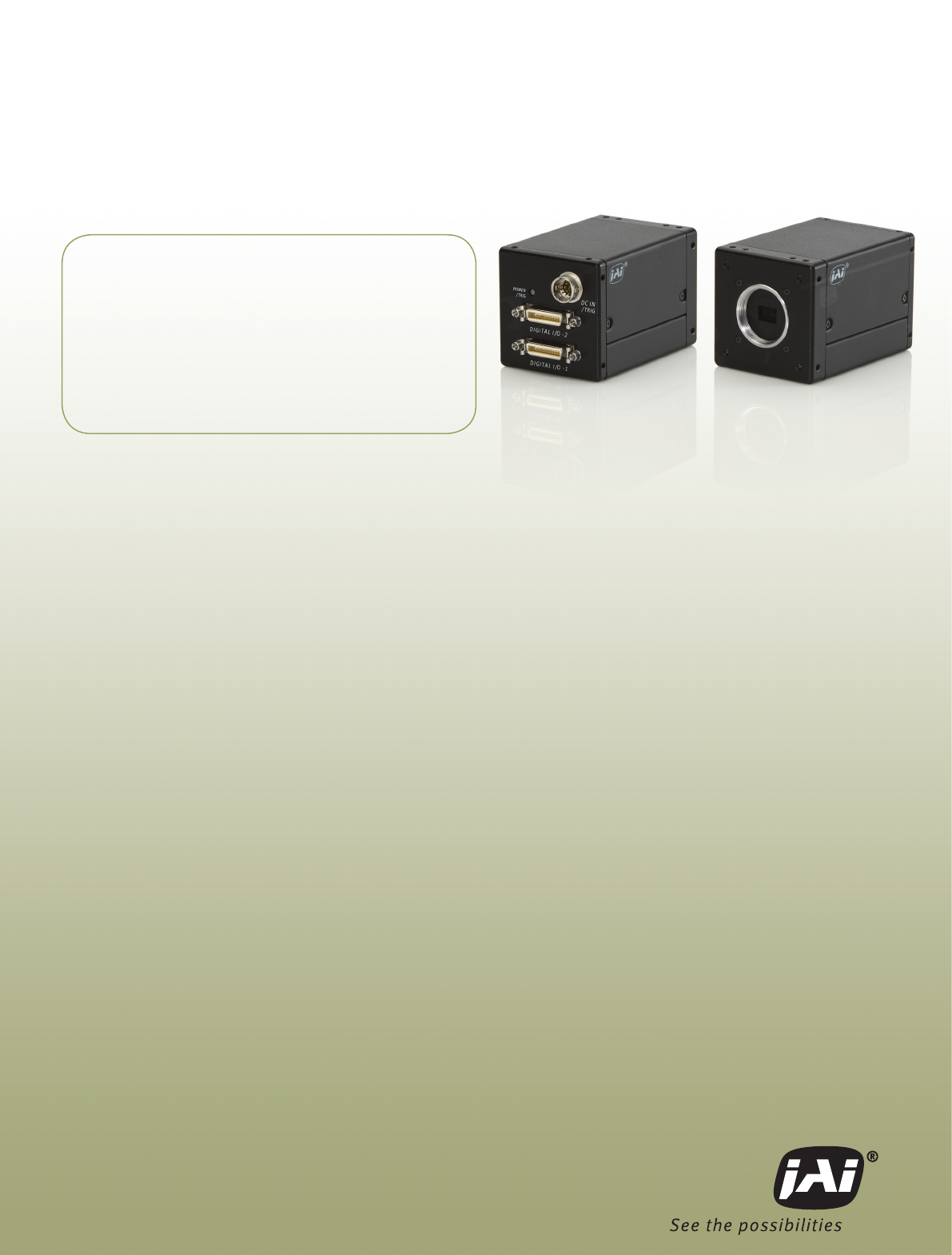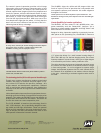
www.jai.com
JAI’s new 2-CCD camera
AD-080 CL
provides simultaneous images of both the visible and near-infrared light spectrums
In certain machine vision applications, the ability to see in-
side an object is just as important as the ability to capture
its outward appearance. For years, imaging professionals
have struggled to combine imaging in both regions – but
the solutions were either too costly or too difcult to de-
ploy and maintain. The launch of JAI’s new multi-spectral
camera ushers in a new era of affordable imaging.
The AD-080CL is a cost-efcient camera that simultaneous-
ly measures visible and near-infrared (NIR) light spectrums
through a single lens using two channels. The rst channel
has a Bayer mosaic color imager that only captures visible
light, while the second has a monochrome imager for NIR
light.
This multi-spectral imaging solution brings a new, essential
dimension to a number of vision inspection applications.
The visible light channel captures the red, green and blue
bands of conventional imaging – or those visible to the
human eye. The NIR channel, on the other hand, “sees”
below the surface of organic and other materials to detect
imperfections the human eye cannot see.
Many imaging applications require only monochrome cam-
eras that work in the visible spectrum, or between 400
and 700 nanometers (nm). But certain applications require
other parts of the spectrum to capture critical data. The
quality of food, currency, and metals, for example, de-
pends not only on their outward appearance – but also on
the condition of tissue that may be below the surface or
simply invisible to the human eye. Cameras that capture
non-visible signals below 400 nm and above 700 nm are
able to enhance details and see below the surface. The
result is more thorough vision inspection, better quality
verication – and, ultimately, higher quality products.
The advantages of 2-CDD technology compared to
traditional multi-spectral technology
Although the imaging industry has used multi-spectral ap-
plications for a number of years, the traditional solutions
have remained costly and difcult to deploy.
One solution has been to simultaneously use two cameras:
one for the visible spectrum and another for the NIR. Al-
though seemingly simple from the user’s point of view, the
two-camera solution is not only expensive, but also inef-
cient and potentially inaccurate, as the cameras need
to be carefully and frequently aligned to ensure the same
eld of view. Moreover, working with twice the equipment
– two cameras, lenses, sets of cables, and so on – adds
to the complexity of the application and decreases reli-
ability.
Previously, the best alternative has been to use high-end
multi-spectral 4-CCD: four-channel cameras that capture
red, green, blue, and NIR spectrums. Although these com-
plex cameras provide excellent results, they are expensive
to buy and maintain.
New application possibilities thanks to easier deploy-
ment, greater accuracy and lower costs
JAI’s new 2-CCD technology not only enables users to mea-
sure both visual and NIR light with a single camera, but
also offers easy set-up and alignment. Practical and cost-
efcient, the AD-O80CL is ideally-suited for a large variety
of applications, including:
• Inspection and sorting of food, such as fruit, vegetables,
nuts, meat, and grains – including the ability to check the
contents under printed packages
• Print inspection of packaging, such as cosmetics and
food packaging
• Surface inspection of textiles and other flat products
• Print board inspection
• Electronics inspection
• Security print inspections including currency, checks,
airline tickets, lottery tickets, and passports
• Advanced surface property and quality inspection of
wood, metal, and other materials
AD-080 CL multi-spectral 2-CCD solution features
1/3” progressive scan camera
1024 (h) x 768 (v) pixels
Up to 30 frames/second
Continuous or triggered operation
Channel balancing by gain or by exposure time (individual)
Camera Link® interface and GigE Vision™ interface
NIR cut-off at 760 nm




